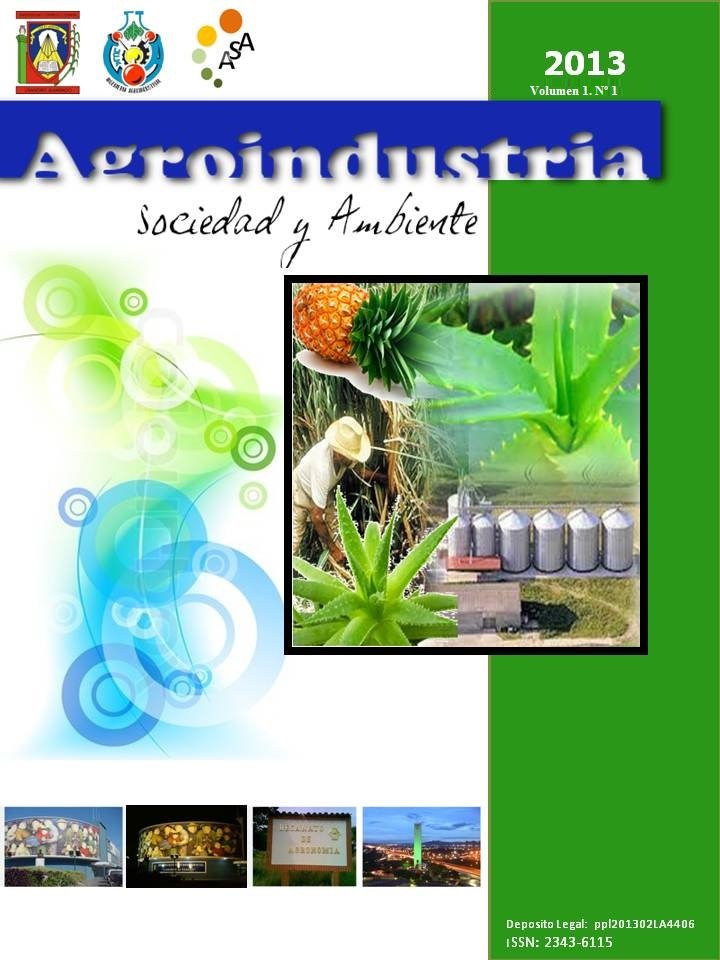Sensory descriptive profile of a protein concentrate by the technique of quantitative-descriptive analysis in Ciepe Foundation, San Felipe, Yaracuy
Keywords:
Profile, Protein ConcentrateAbstract
The purpose of this research was the evaluation of a sensory panel for the development of descriptive profile of a commercial protein concentrate through quantitative analysis descriptive technique (AQD). To do this it was necessary to recruit, select and train a discriminative sensory panel composed of technical staff working in CIEPE Foundation. Among the pre-selection criteria, of the 25 participants, included: the availability of time, health condition and eating habits. Shortlisted candidates were trained for a period of 12 weeks, following guidelines of ISO 8586-1 and ASTM SP758. The sensory description was a commercial protein concentrate. For this, Two evaluations were performed, were determined in the first descriptors associated with different product attributes and the second was quantified each identified descriptors. To record the intensity of each attribute was applied a form composed of unstructured scale. To verify the consistency of the judgments by the panelists, we used analysis of variance (ANOVA) for the descriptive profile of the main attributes of the product. The applied methodology allowed the formation of a trained sensory panel, consisting of 7 individuals (3 men and 4 women), according to the guidelines established in the rules and criteria Jellinek (1985). Descriptive profile was obtained from the analyzed protein concentrate, which is comprised of eight descriptors: ferrous, ivory, astringency, cooked milk, dairy odor, sweet, fatty commercial milk.
Downloads
References
American Society for Testing and Materials (1986). Physical requeriment guidelines for sensory evaluation laboratorios. Eggert J, Zook K. ASTM Special Technical Publication 913, ASTMs; Philadelphia, 68.
American Society for Testing and Materials (2005) Manual on sensory testing methods STP 434.2 nd Ed. Philadelphia: ASTM international, 115.
Ardila, D. (2008). Desarrollo del perfil sensorial de la naranjada por la técnica de análisis cuantitativo-descriptivo. Obtenido el 20 de marzo en: https://www.sinai.did.usb.ve/sinai/servicios/acts.
Bengtsson, S., Berglund, H., Gulyas, B., Cohen, E., Savic, I. (2001) Brain activation during odor perception in males and females. Chem Senses 12 (9), 2027-2033.
Fortín, J. & Desplancke, C. (2001). Guía de selección y entrenamiento de un panel de catadores. España: Acribia. 99 p.
International Organization for Standardization (1993). Sensory analysis general guidance for the selection, training and monitoring of assessor. Part 1: selected assessors 8586-1. Suiza: ISO, 15.
International Organization for Standardization (2003). Sensory analysis methodology a general guidance for establishing a sensory profile 13299. Suiza: international organization for standardization.24p.
Jellinek, G. (1985). Sensory evaluation of food. Theory and practice. Ellis Horwood Ltd. Chichester. England.
Meilgaard, M., Civille, G., Carr, B. (1999). Sensory evaluation techniques. 3rd ed. Florida: CRC Press, 387. Moskowitz, H., Beckley, J., Resurrección, A. (2006). Sensory and consumer research in food product desing and deve lopment. Estados Unidos: Blackwell Publishing, 358.
O'Mahony, M., Goldenberg, M., Stedmon, J., Alford, J. (1979). Confusion in the use of the taste adjectives “sour” and “bitter”. Chem senses and flavour 4 (4), 301-318
Sancho, J., Bota, E., De Castro, J. (2002). Introducción al análisis sensorial de los alimentos. España: alfaomega Ediciones de la Universidad de Barcelona, 366.
Sangronis, E. & Vivas, O. (2009). Guía de Laboratorio de Evaluación Sensorial de alimentos. Universidad Simón Bolívar, Departamento de Tecnología de Procesos Biológicos y Bioquímicos, 19-25.
Statgraphics Centurion, versión XV. (2007). StatPoint Technologies, Inc. Warrenton, Virginia
Torricella, R., Zamora, E., Pulido, H. (2007). Evaluación sensorial. Aplicada a la investigación, desarrollo y control de la calidad en la industria alimentaria. 2da edición. Editorial Universitaria. Ciudad de la Habana – Cuba, 131.
Published
How to Cite
Issue
Section




